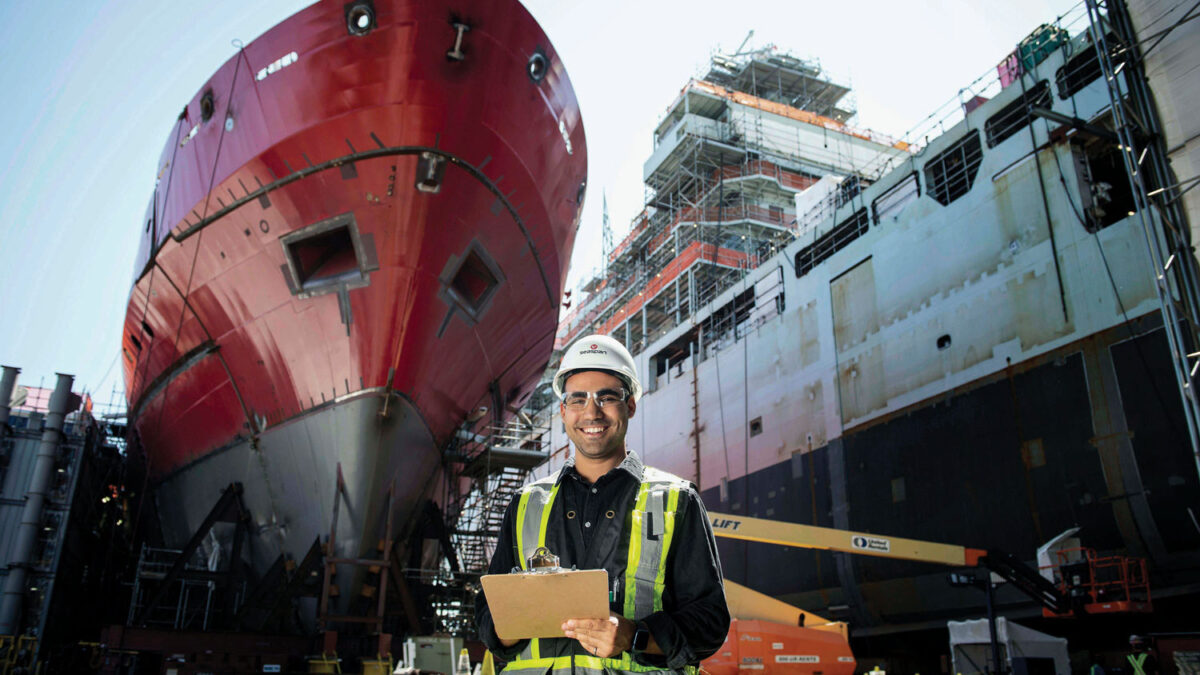In the coastal heart of North Vancouver, Seaspan Shipyards (Seaspan) stands as a stalwart contributor to Canada’s economic resurgence under the National Shipbuilding Strategy (NSS). A recent comprehensive study by Deloitte Canada reveals Seaspan’s stellar performance, injecting over $5.7 billion into Canada’s GDP through shipbuilding, repair, refit, and maintenance activities. Looking forward, Seaspan is poised to extend this financial windfall, adding a projected $20.7 billion to Canada’s GDP by 2035. The NSS, introduced as a beacon of revitalization for the shipbuilding sector, now basks in the glow of these remarkable economic contributions.
“As Canada’s partner under the NSS, Seaspan is transforming our shipbuilding and marine industries through innovation, partnerships and developing world-class talent. The economic contributions of this work are evident locally, regionally and across the country,” said John McCarthy, CEO, Seaspan Shipyards. “Over the next year alone, we will be adding hundreds of people to our team to help us deliver on our promise of ships built in Canada, by Canadians. As we continue to invest in our people, facilities, and drive improvements in how we design, build, and repair ships, Seaspan will remain a significant contributor to the Canadian economy for decades to come and a preferred employer for those looking to work in the maritime industry in British Columbia.”
Over the past 12 years, Seaspan’s impact on job creation within the maritime industry has been nothing short of transformative. The Deloitte report unveils a robust trend, with Seaspan fostering the creation and sustenance of more than 7,000 jobs annually. Projections are even more promising, with this figure anticipated to burgeon to nearly 11,000 jobs per year by 2035. The ripple effect of Seaspan’s operations extends far beyond the balance sheets, resonating in the lively hum of job markets.
Seaspan’s commitment to supporting local businesses is evident in the distribution of its $2.4 billion in contracts under NSS shipbuilding activities. Nation-wide, over 700 Canadian companies have partaken in the monumental task of constructing vessels for Canada. Notably, nearly 500 of these businesses fall within the realm of small and medium-sized enterprises, constituting a substantial 63% of NSS-related contract values. Seaspan’s strategy is not just about economic revival; it’s about nurturing a network of diverse enterprises, strengthening the very fabric of Canadian industry.
Currently, Seaspan stands at the forefront of the NSS, spearheading the construction of the federal non-combat fleet for both the Royal Canadian Navy and the Canadian Coast Guard (CCG). The fruits of Seaspan’s labor are already evident with the delivery of three Offshore Fisheries Science Vessels to the CCG. The shipyard’s ongoing projects include the construction of two Joint Support Ships, one Offshore Oceanographic Science Vessel, a Polar Icebreaker – the flagship of the CCG’s fleet, and 16 Multi-Purpose Vessels. Noteworthy is Seaspan’s adherence to project timelines, with the Polar Icebreaker and the lead ship of the MPVs progressing smoothly through the design phase.
Beyond construction, Seaspan is a versatile player in the maritime sector, providing vital repair, refit, and conversion services for various government and commercial clients. The shipyard’s prowess extends beyond the mere act of building vessels; it is a hub of maritime excellence, catering to diverse needs across the sector.
In essence, Seaspan is not merely rebuilding an industry; it is crafting a legacy of intricate ships, proudly crafted by Canadians for Canadians. Beyond the tangible outputs, Seaspan is nurturing a pipeline of maritime talent, ensuring that the expertise cultivated today becomes the bedrock of tomorrow’s industry leaders. The economic impact is tangible and far-reaching, a wave felt from coast to coast to coast.
For an in-depth exploration of Seaspan’s socio-economic contribution, the complete study is available on their official website. Dive into the details and witness the unfolding chapters of Canada’s shipbuilding renaissance.

